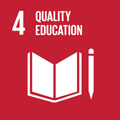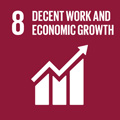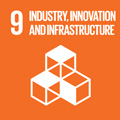- Docente: Paolo Di Marco
- Credits: 8
- SSD: SECS-P/08
- Language: Italian
- Moduli: Paolo Di Marco (Modulo 1) Paolo Di Marco (Modulo 2) Pier Luigi Cattò (Modulo 3) (Modulo D.Ass)
- Teaching Mode: In-person learning (entirely or partially) (Modulo 1); In-person learning (entirely or partially) (Modulo 2); In-person learning (entirely or partially) (Modulo 3); In-person learning (entirely or partially) (Modulo D.Ass)
- Campus: Bologna
-
Corso:
Second cycle degree programme (LM) in
Media, Public and Corporate Communication (cod. 5703)
Also valid for Second cycle degree programme (LM) in Politics Administration and Organization (cod. 9085)
Learning outcomes
At the end of the course, the student is aware of a set of tools for the evaluation and comparison of business organizations with reference to corporate governance in strategic and operational terms. Specifically, it is able to analyze the structures and processes of the various company forms, evaluate the key dimensions of the organizational variables and set the guidelines for a design of the company structures.
Course contents
Module 1 - Models, Analysis and Organizational Dimensions (16 hours)
- Lesson 1 - The concept of organization The reference models - tools
- Lesson 2 - The reference models
- Lesson 3 - Strategy and organization
- Lesson 4 - The evolution of the strategy
Module 2 - New Model and Organizational Design (12 hours) - methods
- Lesson 5 - The new organizational analysis model
- Lesson 6 - Organizational planning
- Lesson 7 - Change management
Readings/Bibliography
From strategy to organization by Paolo Di Marco, Edizioni Martina - 2021
Teaching methods
- References to the supports (slides and reference text) and lectures
- Secure ideas through case studies, testimonials and case histories
- Group exercises to make the acquired knowledge operational
Assessment methods
The test will be held in written form and will be divided into three parts:
- multiple choice questions
- open question
- business case
Office hours
See the website of Paolo Di Marco
See the website of Pier Luigi Cattò
See the website of
SDGs



This teaching activity contributes to the achievement of the Sustainable Development Goals of the UN 2030 Agenda.
